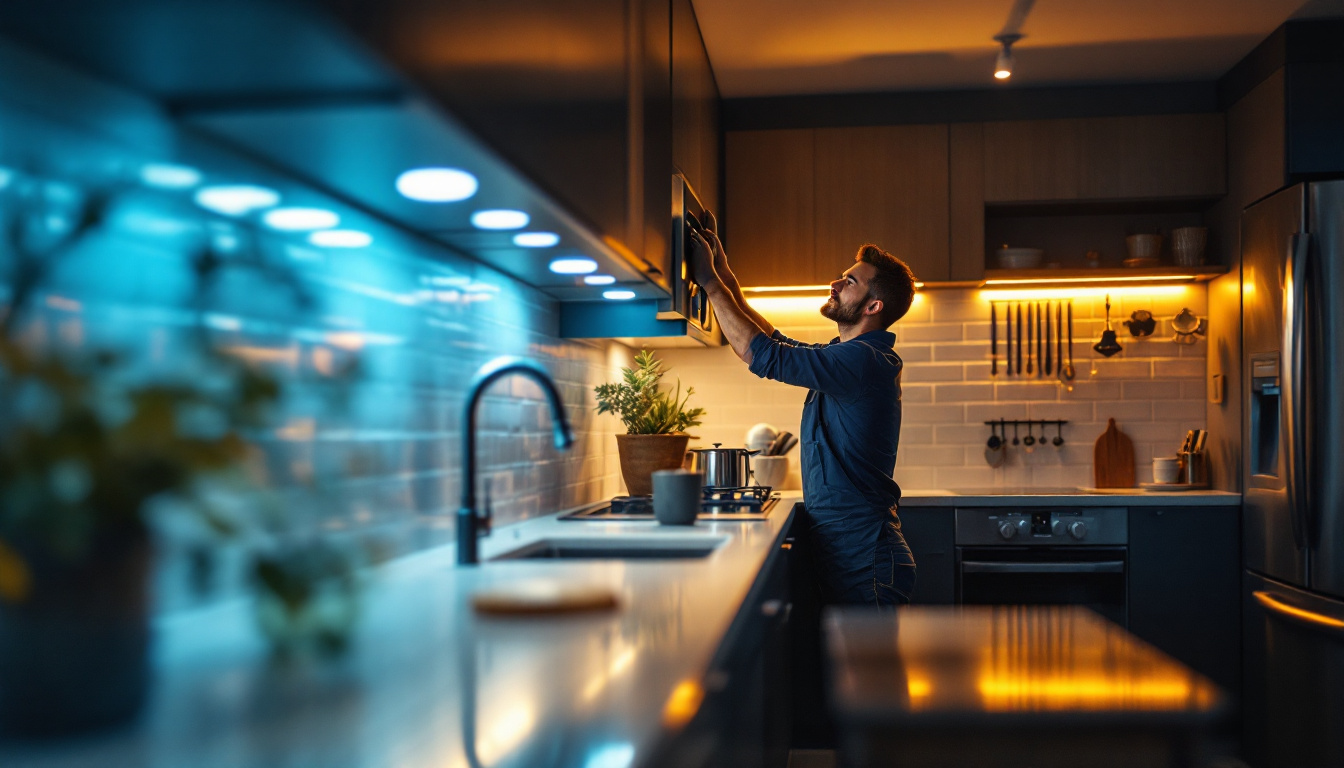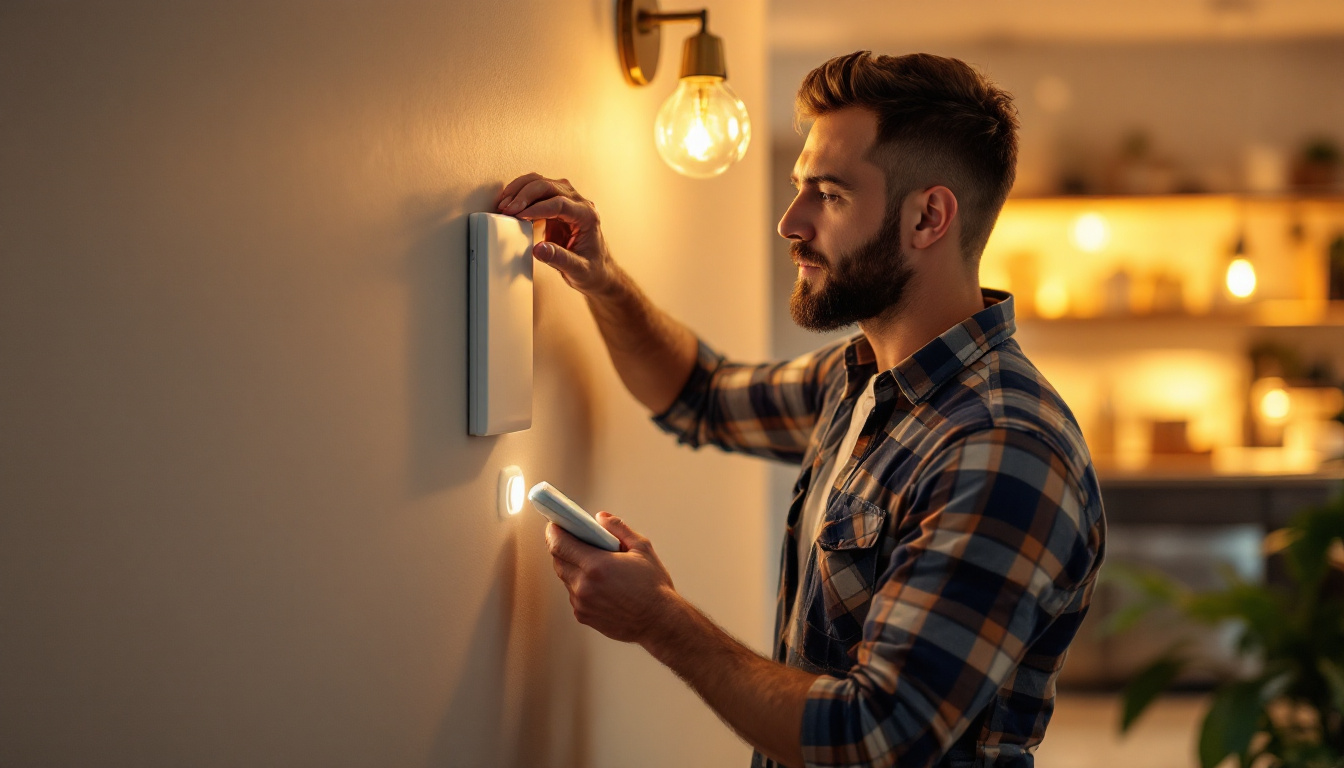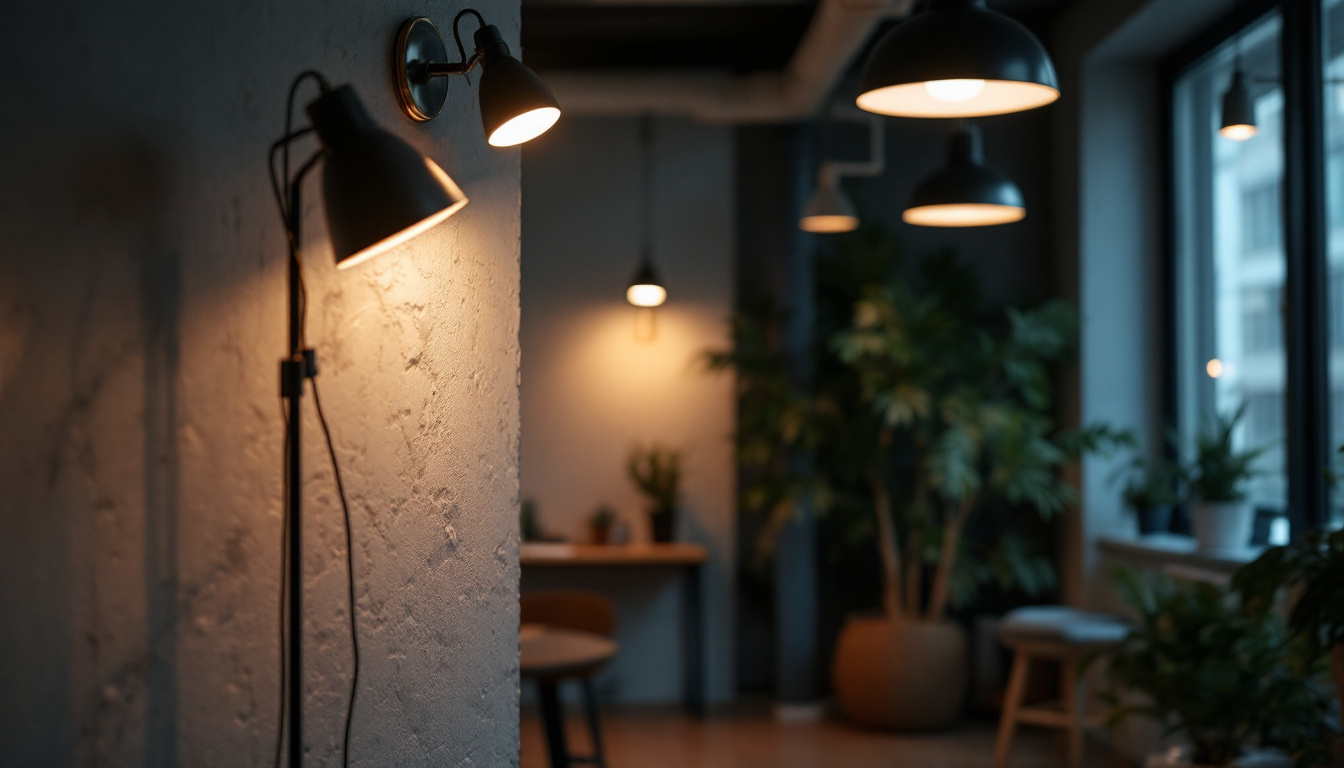

Lighting plays a crucial role in the functionality and aesthetics of a kitchen. Among the various lighting options available, LED under counter kitchen lights have gained immense popularity due to their energy efficiency, versatility, and ability to enhance the workspace. However, while installing these lights, lighting contractors often encounter a range of issues that can impact the overall effectiveness of the lighting design. This article aims to provide insights and practical solutions for lighting contractors to avoid common pitfalls associated with LED under counter kitchen lights.
LED under counter kitchen lights are designed to illuminate countertops, providing adequate lighting for food preparation and cooking tasks. These lights are typically installed beneath cabinets, creating a warm and inviting atmosphere while ensuring that the workspace is well-lit. The advantages of using LED technology include lower energy consumption, longer lifespan, and reduced heat output compared to traditional incandescent or fluorescent lights. Additionally, the color temperature of LED lights can be selected to enhance the kitchen’s aesthetic, with options ranging from warm white to cool daylight tones, allowing homeowners to create the desired ambiance.
Before diving into installation techniques and potential issues, it is essential for lighting contractors to understand the different types of LED under counter lights available. Options include strip lights, puck lights, and linear fixtures, each offering unique benefits and installation requirements. Understanding these differences can help contractors choose the right product for their clients’ specific needs. Furthermore, considering factors such as dimmability, color rendering index (CRI), and compatibility with smart home systems can elevate the functionality and appeal of the lighting solution, making it more attractive to potential buyers.
1. **LED Strip Lights**: These flexible light strips can be cut to size and are ideal for creating a seamless look. They are often used in modern kitchens and can be installed in various configurations. Strip lights can also be equipped with adhesive backing for easy installation, and many come with features like remote control dimming or color-changing capabilities, allowing homeowners to customize their lighting based on mood or task.
2. **Puck Lights**: These small, round fixtures are perfect for targeted lighting. They can be installed individually or in groups to highlight specific areas, such as a cutting board or a decorative display. Puck lights are available in battery-operated versions, which can simplify installation by eliminating the need for wiring, making them a versatile choice for renters or those looking for a quick upgrade. Their compact size allows for creative placement, ensuring that even the smallest spaces can benefit from focused illumination.
3. **Linear Fixtures**: These fixtures provide a more traditional look and are often used in larger kitchens. They offer even illumination and can be installed in a straight line or in a more dynamic arrangement. Linear fixtures can also be integrated with under cabinet lighting systems that include motion sensors or timers, adding convenience and energy efficiency. Many models are designed to be surface-mounted or recessed, allowing for a clean and polished finish that complements various kitchen styles.
Despite the advantages of LED under counter kitchen lights, several issues can arise during installation and use. Understanding these challenges can help lighting contractors anticipate problems and provide effective solutions.
One of the most common issues is inadequate lighting, which can stem from improper placement or insufficient wattage. When lights are too far from the work surface or not bright enough, the kitchen can become dim and uninviting.
To avoid this, contractors should assess the kitchen layout and determine the optimal placement for the lights. A general rule of thumb is to install lights 18 to 24 inches apart, ensuring even coverage across the countertop. Additionally, selecting the right wattage is crucial; contractors should consult the manufacturer’s specifications to ensure that the lights provide adequate illumination for the space.
Another issue that can arise is a mismatch in color temperature. Different LED products can emit varying shades of white light, ranging from warm to cool tones. If the color temperature of the under counter lights does not match other lighting sources in the kitchen, it can create a disjointed look.
To prevent this issue, contractors should recommend LED lights with a consistent color temperature. A common choice for kitchen lighting is a color temperature of around 3000K, which provides a warm, inviting glow. It is also advisable to test the lights in the space before finalizing the installation to ensure a harmonious blend with existing fixtures.
proper installation is key to maximizing the benefits of LED under counter kitchen lights. By following best practices, lighting contractors can ensure a seamless and effective lighting solution for their clients.
Before installation begins, it is essential to create a detailed plan and layout for the lighting. This includes measuring the countertop space, determining the number of fixtures needed, and deciding on the best placement for each light. Contractors should also consider the overall design of the kitchen and how the lighting will complement the space.
Using design software or sketches can help visualize the final look and make necessary adjustments before installation. This planning phase is crucial for avoiding common mistakes and ensuring that the lighting meets the client’s expectations.
Electrical considerations are paramount when installing LED under counter lights. Contractors should ensure that the existing electrical system can handle the additional load of the new lights. This may involve upgrading circuits or installing new outlets, especially in older homes where electrical systems may not be up to code.
Additionally, it is important to use the appropriate wiring and connectors for LED lights. Using the wrong type of wiring can lead to flickering, dimming, or even damage to the lights. Contractors should familiarize themselves with the manufacturer’s recommendations for electrical requirements and installation guidelines.
Proper mounting is essential for the longevity and effectiveness of LED under counter lights. Contractors should use high-quality mounting hardware and ensure that the lights are securely attached to the cabinetry. This will prevent issues such as sagging or falling fixtures, which can create safety hazards and necessitate costly repairs.
For strip lights, using adhesive backing is often sufficient, but additional mounting clips can provide extra security. Puck lights and linear fixtures should be installed according to the manufacturer’s instructions, ensuring that they are level and properly aligned.
Even with proper installation, issues can still arise over time. Lighting contractors should be prepared to address common maintenance and troubleshooting concerns that clients may encounter with LED under counter lights.
Flickering is a common problem with LED lights and can be caused by several factors, including incompatible dimmer switches, voltage fluctuations, or loose connections. Contractors should advise clients on the importance of using compatible dimmers specifically designed for LED lights to prevent flickering.
If flickering persists, it may be necessary to check the wiring and connections to ensure everything is secure. In some cases, upgrading to a higher-quality LED driver can resolve the issue, as low-quality drivers may not provide stable power to the lights.
While LED lights have a longer lifespan than traditional bulbs, they can still burn out due to overheating or electrical issues. Contractors should educate clients on the importance of ensuring adequate ventilation around fixtures to prevent overheating.
If a fixture burns out, it is often a simple matter of replacing the light. However, if multiple fixtures are failing, it may indicate a larger electrical issue that requires professional assessment. Contractors should be prepared to troubleshoot and provide solutions to ensure the longevity of the lighting system.
Beyond functionality, LED under counter kitchen lights can significantly enhance the overall aesthetics of a kitchen. By choosing the right fixtures and incorporating them into the design, lighting contractors can create a visually appealing space that meets the needs of their clients.
LED under counter lights can be used to highlight specific design features within the kitchen, such as decorative backsplashes, unique countertops, or architectural details. By strategically placing lights to accentuate these elements, contractors can create a focal point that draws the eye and adds depth to the space.
For example, installing LED strip lights along the edge of a countertop can create a stunning visual effect, while puck lights can be used to spotlight artwork or decorative items. This not only enhances the kitchen’s aesthetics but also adds a layer of sophistication to the overall design.
In addition to task lighting, under counter lights can also contribute to the overall ambiance of the kitchen. Dimming options allow homeowners to adjust the lighting according to their needs, whether they are preparing a meal or hosting a dinner party.
Contractors should consider recommending dimmable LED fixtures and compatible dimmer switches to provide clients with flexibility in their lighting design. This ability to create different moods can significantly enhance the kitchen experience, making it a more inviting space for family and friends.
LED under counter kitchen lights offer a myriad of benefits, from energy efficiency to enhanced aesthetics. However, lighting contractors must be aware of common issues that can arise during installation and use. By understanding the types of LED lights available, following best practices for installation, and being prepared to address maintenance concerns, contractors can ensure a successful lighting project that meets the needs of their clients.
Ultimately, effective communication with clients about their expectations and preferences is crucial. By providing expert advice and solutions, lighting contractors can not only avoid potential issues but also elevate the overall kitchen experience through thoughtful and well-executed lighting design.
Ready to elevate your kitchen lighting projects with the best LED under counter lights on the market? Look no further than LumenWholesale, where we provide lighting contractors with high-quality, specification-grade lighting solutions at unbeatable wholesale prices. Our extensive selection is designed to meet the highest industry standards, ensuring you deliver reliable and high-performance lighting to your clients. Plus, with free shipping on bulk orders, you can stock up on premium lighting without the worry of hidden fees or inflated markups. Don’t compromise on quality or value—choose LumenWholesale for Wholesale Lighting at the Best Value and make your next installation a shining success.

Discover the transformative advantages of occupancy sensor switches for lighting contractors.

Discover why sourcing vanity lights in bulk from local distributors might not be the best choice.

Discover why purchasing LED tube lights in bulk from local distributors might not be the best choice.

Discover essential insights into area lights with our comprehensive guide tailored for lighting contractors.
Get notified when NEW deals are released.
Optimize your budget with wholesale discounts.
Only top-quality, specification-grade lighting products.
No additional costs at checkout - what you see is what you pay.
We understand the unique needs of contractors.